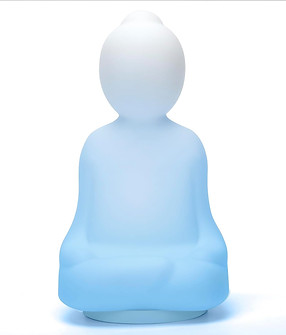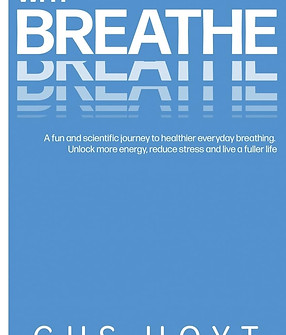
Mindful Breathing
Mindful breathing, also known as conscious or deep breathing, is a foundational mindfulness practice that involves bringing focused awareness to the breath as it naturally flows in and out of the body. Rooted in ancient contemplative traditions such as Buddhism and yoga, mindful breathing serves as a simple yet potent technique for cultivating present-moment awareness, reducing stress, and promoting relaxation and mental clarity. By tuning into the sensations of the breath with nonjudgmental attention, individuals can anchor themselves in the present moment, quiet the chatter of the mind, and cultivate a deeper sense of inner calm, balance, and resilience amidst the busyness of daily life.
Well-Being Benefits
Stress Reduction and Relaxation:
-
Calms the nervous system and reduces physiological arousal, promoting relaxation and alleviating symptoms of stress, anxiety, and tension.
-
Engages the body's relaxation response, triggering a cascade of physiological changes such as slowed heart rate, lowered blood pressure, and reduced muscle tension, leading to a profound sense of relaxation and ease.
Enhanced Mind-Body Awareness:
-
Heightens awareness of the mind-body connection, fostering a deeper understanding of the interplay between thoughts, emotions, and bodily sensations.
-
Cultivates embodied presence and self-awareness, allowing individuals to recognize and respond skilfully to stressors and triggers with greater clarity and equanimity.
Focused Attention and Concentration:
-
Improves concentration and cognitive focus by directing attention to the rhythmic pattern of the breath, sharpening mental clarity and reducing distractions.
-
Enhances cognitive performance and productivity by training the mind to sustain attention on the present moment, enhancing focus, and reducing mind-wandering and cognitive overload.
Emotional Regulation and Equanimity:
-
Supports emotional regulation and equanimity by creating space between stimulus and response, allowing individuals to observe thoughts and emotions with nonjudgmental awareness.
-
Cultivates emotional resilience and balance, empowering individuals to navigate challenging situations and emotional upheavals with greater composure, acceptance, and self-compassion.
Grounding and Centering Presence:
-
Anchors individuals in the present moment, providing a refuge from rumination about the past or worries about the future, and fostering a sense of groundedness and centered presence.
-
Serves as a portable and accessible tool for managing stress and overwhelm in daily life, offering a moment of pause and stillness amidst the busyness and demands of modern living.
Advice for Practicing Mindful Breathing:
-
Find a Quiet Space: Choose a quiet and comfortable environment for your mindful breathing practice, free from distractions or interruptions, where you can sit or lie down in a relaxed posture.
-
Focus on the Breath: Bring your attention to the natural rhythm of your breath, observing the sensations of inhalation and exhalation as they occur in the body, without trying to control or manipulate the breath.
-
Use Anchor Points: Use anchor points such as the rising and falling of the abdomen, the sensations of air passing through the nostrils, or the expansion and contraction of the chest to anchor your attention to the breath.
-
Practice Nonjudgmental Awareness: Cultivate an attitude of nonjudgmental awareness towards your breath and any accompanying thoughts, emotions, or sensations that arise during the practice, allowing them to come and go without attachment or resistance.
-
Return to the Breath: Whenever you notice your mind wandering or becoming distracted, gently guide your attention back to the breath, using it as a focal point to recenter and refocus your awareness in the present moment.
-
Start with Short Sessions: Begin with short mindful breathing sessions of 5-10 minutes and gradually increase the duration as you become more comfortable and experienced with the practice.
-
Integrate into Daily Life: Extend mindful breathing into your daily life by incorporating mini-breathing breaks throughout the day, pausing to take a few conscious breaths whenever you feel stressed, overwhelmed, or in need of grounding.
By integrating mindful breathing into your daily routine as a simple yet powerful practice for cultivating present-moment awareness and inner peace, you can harness its transformative potential to reduce stress, enhance well-being, and nurture a deeper sense of connection and harmony with yourself and the world around you. Whether practiced formally in dedicated meditation sessions or informally as a mindful pause in daily life, mindful breathing offers a pathway to greater clarity, balance, and resilience on the journey of self-discovery and personal growth.
Explore Additional Resources
From downloadable guides to links leading to valuable online content, this section is your gateway to a world of resources aimed at nurturing your mind, body, and spirit. Explore, download, and thrive on your path to well-being.
Our Wellbeing Recommendations
Dive into our favorite picks, each chosen with your well-being in mind, and embark on a journey of self-discovery and tranquility. Elevate your lifestyle with the products we love and trust on your path to a more harmonious existence.





.jpg)






